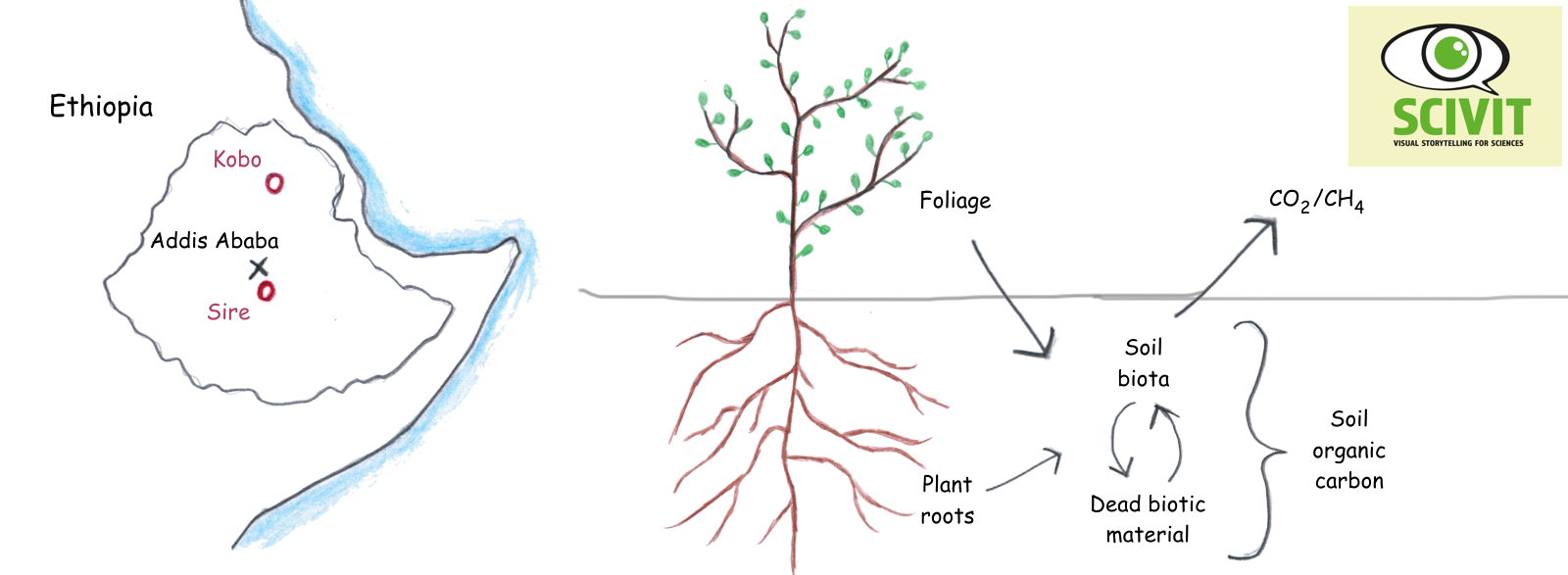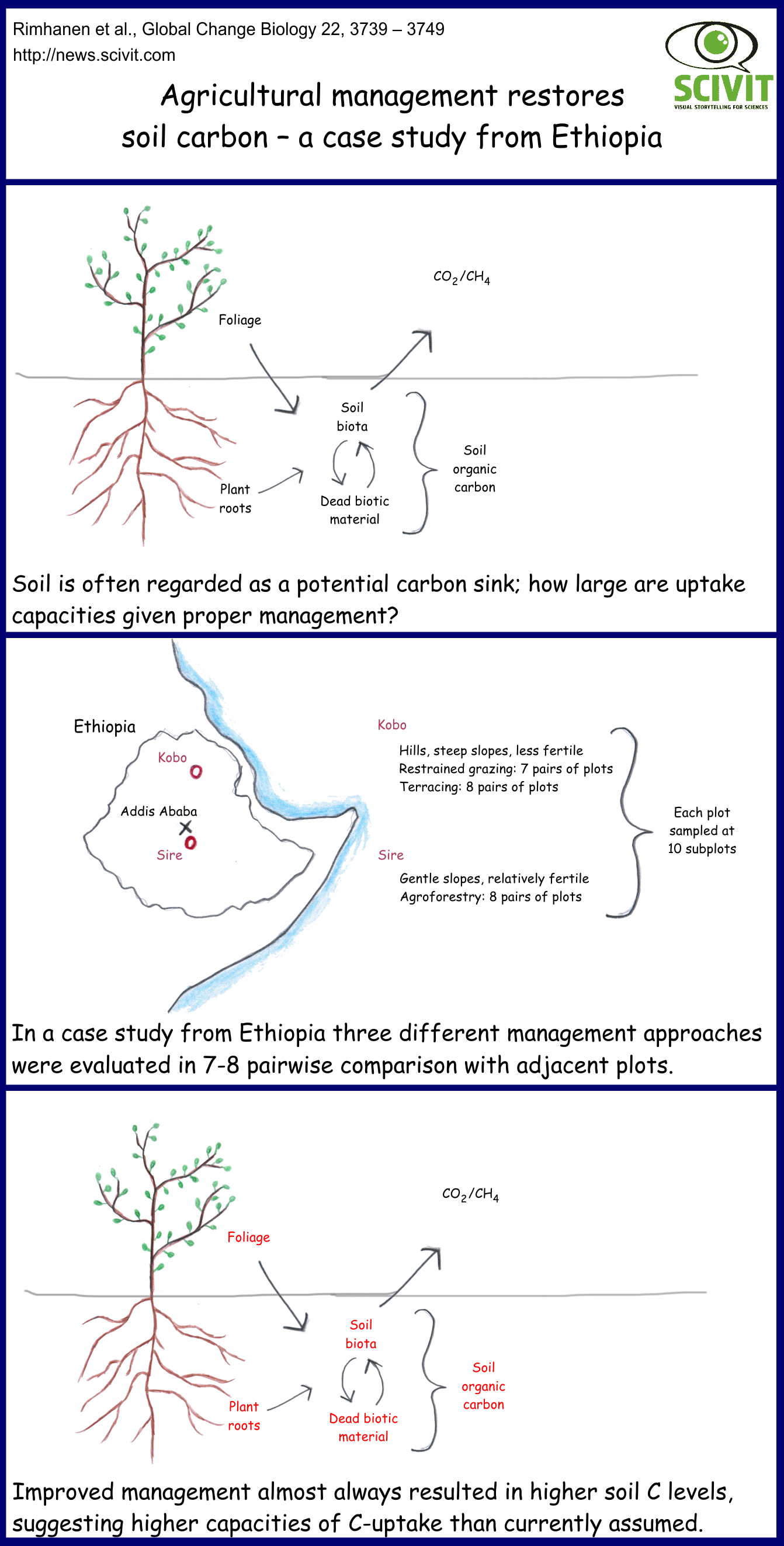
Agricultural management restores soil carbon – a case study from Ethiopia
How much carbon can be stored in the soil?
Besides the carbon stored in the deep oceans and in fossil fuels, soil constitutes the third largest reservoir for carbon on earth. Agricultural management has resulted in the liberation of a large part of this carbon increasing atmospheric carbon dioxide and reducing at the same time soil fertility. Agricultural management saving soil carbon is therefore often advocated as one approach for mitigating climate change and improving food security at the same time. But how much carbon can be gained back by soils when following such approaches? This question is not only important for people projecting future climate development. A documented capacity of a given management approach for filling up soil carbon stores may also be the basis for financial recompensations for the farmers involved.
Soil degradation and restoration in Ethiopia
Overuse has resulted in severe degradation of soils in Ethiopia. Poor state of soil fertility combined with drought and other factors resulted in severe famines in the 70s and 80s. Subsequent soil restoration programs created ideal conditions for assessing the potential of soil management for filling up soil carbon stores.
Source: Rimhanen et al., Global Change Biology 22, 3739 – 3749
